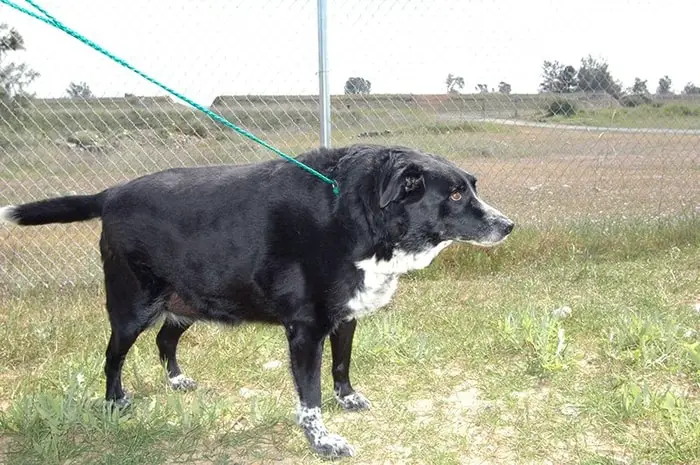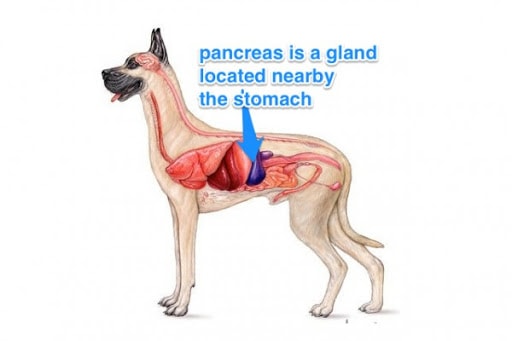Pancreatic disease in dogs is not so common as other diseases but is the consequence of many other diseases. The pancreas is a vital organ, and the pancreas releases enzymes to help in food digestion and hormones such as insulin, which are essential for blood sugar or glucose metabolism. The pancreas has performed in two main functions, and that is the exocrine and endocrine function.
The exocrine pancreas secretes digestive enzymes, fluid, and bicarbonate, which is vital to digestion. The endocrine function of the pancreas produces insulin and glucagon, which regulate the blood sugar level. There are different types of pancreatic disease in dogs.
Most Common Pancreatic Diseases in Dogs
The pancreas is one of the crucial organs of the digestive system of dogs. The pancreas lies in the abdominal cavity adjacent to the liver and small intestine. The pancreas may be affected by many organisms like bacteria, viruses, metabolic agents, and non-infectious tumors or carcinomas. Due to the consequences of many dog diseases, the pancreatic function may be hampered. On the other hand, the pancreas’ improper function may lead to many diseases like Diabetes mellitus, colic, diarrhea, indigestion, stunted growth, and weakness. In my article, I shall briefly discuss the most common eight most common pancreatic diseases in dogs for your easy assimilation.

1. Pancreatic Disease in Dogs: Pancreatitis
Pancreatitis is the most common disease in both dogs and cats. Most occurrences of pancreatitis in the dog involve middle-aged, obese females. However, dogs with average weight and male dogs can also be affected. It is described as chronic and acute form, with chronic form its meaning the condition has developed over time while acute is when it appears suddenly.
The dog and cat are spread from many of the causes of pancreatitis that affects humans. However, several general mechanisms should be considered, such as obstruction to the pancreatic duct, dietary factors, infectious agents, trauma, toxic drug reactions, metabolic abnormalities, and vascular alterations. Some common causes of pancreatitis in dogs are:
- Biliary tract disease.
- Trauma.
- Surgery.
- Vascular factors.
- Hypercalcemia.
- Hyperlipoproteinemias (type 1, 4,5).
- Drugs.
- Carcinoma of the pancreas.
- Hypotensive shock.
- Ductal obstruction by tumor.
The most common signs of your dogs are vomiting, anorexia, and mental depression. Some occurrences reportedly follow the ingestion of a fatty meal, although this might not be a consistent finding.
- Initially, the vomitus might contain partially undigested food, and this may be followed subsequently by vomitus consisting of bile and watery mucus.
- After the initial vomiting, your dog might show regurgitant movements only.
- Its attitude will vary mild to marked depression, and its posture will either be healthy, upright will abnormal tucking or lateral recumbency depending on the degree of pain and hypovolemia.
- Diarrhea might occasionally occur in your dogs, but scant or absent faces are common due to the peritonitis-induced ileus.
Your vets performed to the diagnosis of pancreatitis in dogs are radiography and ultrasonography. Some clinicopathologic findings help diagnose pancreatitis. The unique complication of pancreatitis in dogs are:
- Diabetes Mellitus.
- Pancreatic abscess and pseudocyst.
- Bowel infarction.
- Bowel obstruction.
- Bile duct obstruction.
- Renal failure.
- Septicemia.
- Consumption coagulopathy.
- Relapsing pancreatitis.
- Pancreatic exocrine insufficiency.
Differential diagnoses of other diseases are acute gastroenteritis, intoxications, blunt abdominal trauma, GI obstruction, GI perforation, intestinal volvulus, intestinal ischemia, and infarction, emphysematous cholecystitis, ruptured organs (i.e., uterus, urinary bladder, and gallbladder), acute renal failure, and acute hepatopathy.

You must have to follow the basic principles for treating severe pancreatitis in dogs. The most important treatment is the provision of adequate parental fluids therapy. Marked hypotension in your dog should be treated with rapid volume expansion with lactated Ringer’s or 0.9% saline solutions. The intravenous maintenance solution can consist of 2.5-5% dextrose in 0.45% saline solution supplemented with potassium chloride and soluble vitamin B complex. Atropine and propantheline are used to help stop vomiting. If vomiting persists, metoclopramide can be used without the parasympatholytic effects of the first generation antiemetics.
Cimetidine has been recommended for your dog because it inhibits gastric acid secretion. Antibiotics are reserved for severely ill patients. Analgesic treatment should be reserved for your pets due to intractable pain. Regular insulin should be given by slow constant intravenous infusion if the dog if hypotensive.
2. Pancreatic Disease in Dogs: Pancreatic Abscesses
Pancreatic abscesses are an accumulation of pus in the pancreas containing an epithelium-lined cavity, formed initially from necrotic tissue or an infected pseudocyst. The disease is a complication of pancreatitis, and the clinical presentation is more or less similar to pancreatitis. The signs of pancreatic abscesses include dehydration, diarrhea, depression, vomiting, abdominal pain, weight loss, loss of appetite, and fever.

There are no specific diagnostic test or treatment for the pancreatic abscess. Surgical treatment is significant for this disease. Your pets may respond to the surgical drainage of the abscess. It is based on your dog’s health condition and other factors. Your vets will be recommended the surgical treatment for your lovely pets.
3. Pancreatic Cancer
Pancreatic cancer is a rare disease in dogs. But when it occurs, it is dangerous for your pets. The most common pancreatic cancers are pancreatic adenocarcinoma, insulinomas, and gastrinomas. Pancreatic adenocarcinomas are the cause of necrosis and inflammation. The signs and symptoms of pancreatic cancer are-
- Weakness.
- Vomiting.
- Diarrhea.
- Change in the intake of food and water.
- Loss of appetite.
- Weight loss.
- Abdominal pain.
- Fever.
- Change in behavior and mood.
- Anxiety.
- Seizures.
- Tremors and spasms.
- Skin appearance change.
- Signs of jaundice.
There are different types of a diagnostic test which is recommended to your veterinarian. Your experts investigate your dog, and therefore he can be done to determine the root of the disease. The test of the pancreatic cancer is- blood test for hypoglycemia, glucose level exam, abdominal ultrasound, analysis of possible AIGR, diagnostic imaging processes, and biopsies. If the diagnosis results as pancreatic cancer, your vet should take the proper care and treatment.

Your vet should perform the partial or total surgical removal of the pancreatic tumors or removal of the entire pancreas. Sometimes chemotherapy and radiation therapy should be performed following surgery. Nonsteroidal anti-inflammatory drugs (NSAIDs) give your pets for pain relief.
4. Pancreatic Disease in Dogs: Pancreatic Pseudocyst
Pancreatic pseudocyst reported in dogs and cats. Pancreatic pseudocyst is an accumulation of pancreatic juice enclosed by a wall of granulation or fibrous tissue. It is a complication of pancreatitis. The cause of the pseudocyst is unknown. A pseudocyst is usually rich in pancreatic enzymes and sterile. The signs of pancreatic pseudocyst are:
- Anorexia.
- Vomiting.
- Weight loss.
- Lethargy.
- Abdominal pain.
- Depression.
- Fever.
- Icterus.
There is no definitive diagnostic test for pancreatic pseudocyst. Your veterinarian should be monitoring your pets, and pancreatic pseudocyst can be treated medically or surgically. Ultrasound-guided percutaneous aspiration should be performed in your vet. Close monitoring is essential for the size of the pseudocyst.

5. Pancreatic Tumors
Exocrine cancer of the pancreas is rear in the dog. The majorities of the tumors are epithelial, and most are adenocarcinomas of ductular or acinar origin. These tumors often have aggressive behavior, with implantation on the peritoneum and metastasis to the liver is common. The liver nodules can be small or quite extensive.
There are no known causes of pancreatic adenocarcinoma in dogs. The most common manifestations are weight loss, anorexia, and vomiting. Ascites from peritoneal implants and icterus from common bile duct obstruction can also occur in your dog.

There are no specific diagnostic tests for pancreatic cancer. The hemogram and serum chemistry panel might reflect the disease’s effect, as seen with the cholangiectasis associated with metastasis involving the hepatobiliary tree. Serum amylase and lipase levels are usually reasonable and non contributing. Abnormal ultrasound can demonstrate abnormal pancreatic parenchyma and metastatic lesions involving the liver. Your vets performed the definitive diagnosis is obtained through a diagnostic laparotomy and histopathology on biopsied specimens.
Your veterinarian recommended the exact treatment, and the optimal treatment would be complete surgical destruction of the tumor. However, a diagnosis is hardly ever made early enough before the malignancy has had a chance to spread. The prognosis of the disease is always grave.
6. Exocrine Pancreatic Insufficiency
Canine exocrine pancreatic insufficiency is digestive disorders that are caused by the insufficient secretion of enzymes from the pancreas. The dog’s pancreas is a V-shaped gland that performs in two main functions that are exocrine and endocrine function. The exocrine functions are secrets digestive enzymes, fluid, and bicarbonate and are responsible for food digestion. The cause of the disease is the inheritance and an autosomal recessive disorder.
The functional mass of acinar cells is destroyed in the disease. Other signs may include-
- Diarrhea.
- Vomiting.
- Coat condition may become weak and greasy.
- Malnutrition of the dog.
- Weight loss.
- Lethargy.
Diagnosis is more difficult when the disease is reached the subclinical condition. In dogs, the exocrine pancreatic function is diagnosed by measuring blood trypsinogen levels using the serum trypsin-like immunoreactivity test (TLI). Management and treatment should be recommended to your experts and supply a sufficient volume of supplementation with pancreatic enzymes provided in different forms, including capsules, tablets, granules, uncoated enzymes powder, and raw pancreas.

7. Pancreatic Disease in Dogs: Diabetes Mellitus
Diabetes is one of the common diseases of middle to older aged dogs. There are two types of diabetes in dogs: Diabetes incipidus and Diabetes Mellitus. The primary cause of diabetes is the insufficient production of insulin hormones by the B cells of Islets of Langerhans of the pancreas. The glucose that circulates in the blood insets into the cells with the help of insulin hormones. If the pancreas cannot produce the required amount of insulins, the cell cannot get the glucose for metabolism. The causes of insufficient production of insulin are pancreatitis, pancreatic abscess, pancreatic tumors, and pancreatic pseudocyst.

Concluding Remarks on Pancreatic Disease in Dogs
The pancreas is one of the crucial organs of the digestive system of dogs. The pancreas plays many vital roles by producing enzymes and hormones. The common pancreatic disease is the consequence of many other diseases. As a dog owner, the knowledge of the pancreatic diseases will help you diagnose early and take adequate preventive measures. I have discussed very briefly and minutely about the common pancreatic diseases for your better understanding. I think this information will enrich your knowledge about your dog’s health. If the above article helps you, please share it with your friends through social media.